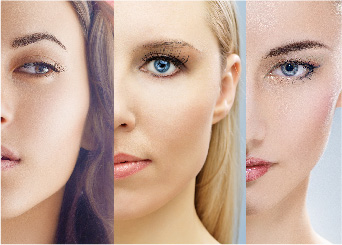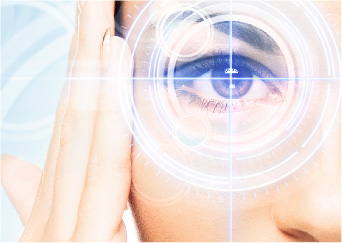Overview
Dry eye syndrome is one of the most common problems affecting the general population and can cause problems that range in severity from mildly irritating to debilitating. Dry eye syndrome is a general term that describes the state of the front of the eye in response to a breakdown in the natural layer of tears that coats the front of the eye, called the tear film. Normally, this layer of tears is a stable, homogenous layer that not only provides the cornea and conjunctiva a healthy buffer from damage were it constantly exposed to the air, but this interface between the tear film and the air is also responsible for a significant amount of the focusing power of the eye. When the tear film becomes unhealthy, it breaks down in different places on the cornea and conjunctiva, leading not only to symptoms of irritation, but also to unstable and intermittently changing vision.
While there are numerous different symptoms one can experience, prominent amongst these symptoms is tearing; naturally, a patient may wonder why their eye can be “dry” despite producing plenty of tears. This is because the unhealthy tear film and the irritation that comes from it stimulates the brain to produce a wave or reflex of tears to help counteract the irritation. However, this reflex tearing is simply insufficient to correct the overall problem. For this reason, dry eye syndrome could more appropriately be termed “Tear Film Dysfunction.” Other symptoms of dry eye syndrome or tear film dysfunction include:
- Burning
- Stinging
- Itching
- tearing
- sandy or gritty feeling
- Scratchy or foreign-body sensation
- Discharge
- Frequent blinking
- Mattering or caking of the eyelashes (usually worse upon waking)
- Redness
- Blurry or fluctuating vision (made worse when reading, computer, watching television, driving, or playing video games)
- Light-sensitivity
- Eye pain and/or headache
- heavey eye lids
- eye fatigue
Causes
- Allergies
- Decreased hormones associated with aging
- pregnancy
- Thyroid eye conditions
- Eyelid inflammation (blepharitis)
- Medication/supplement use, including psychiatric medicines, OTC cold medicines, anti-histamines, beta-blockers, pain relievers, sleeping pills, diuretics, Hormones replacement, and oral contraceptives
- Sjogren’s syndrome (dry mucus membranes throughout body)
- Other autoimmune disorders including Lupus and/or Rheumatoid Arthritis
- Chemical splashes / injuries to the eyes
- Eye surgery
- Infrequent blinking, associated with staring at computer or video screens,and Parkinson’s
- Environmental (dusty, windy, hot/dry)
- Contact lens use
- Neurologic conditions, including stroke, Bell’s palsy, Parkinson’s, trigeminal nerve problem,
- Exposure keratitis, in which the eyelids do not close completely during sleep ie lagophthalmos
- Post refractive surgery (LASIK or PRK), it may generally last three to six months,or longer
- Inflammatory eye conditions, including Herpes virus infections and uveitis / iritis
- Diabetes
- Vitamin A deficiency (rare in US)
For more info on Dry Eye Disease please check out the link eyeSmart.
















